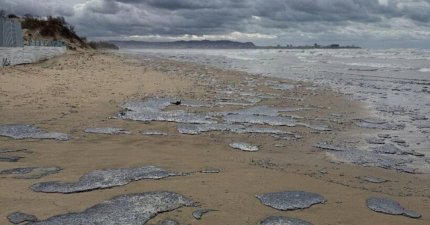According to the spokesman for the Ukrainian Navy, Dmytro Pletenchuk, the fuel oil leak after the accident of Russian tankers in the Sea of Azov could reach the coast of Odessa and Mykolaiv.
Points of attention
- Fuel oil leak from Russian tankers in the Sea of Azov poses a serious threat of pollution reaching the coasts of Odessa and Mykolaiv.
- Satellite monitoring confirms the spread of fuel oil spills in the Azov and Black Seas, affecting the marine environment.
- Ukraine must take coordinated actions to prevent further pollution and ensure the safety of its coasts.
- The pollution from Russian tankers has already reached the Crimea coast, highlighting the urgent need for containment measures.
- The area of contaminated territory near the coast of Crimea is vast, emphasizing the severity of the environmental impact of the accident.
What is known about the pollution of the Black Sea with fuel oil after the accident of Russian tankers?
The current is arranged in such a way that, most likely, it can reach our Odessa and Mykolaiv coasts. There is such a probability, of course, — noted Pletenchuk.

The Navy spokesman emphasized that Ukraine has no influence over civilian ships from the perspective of military efforts, which allows the aggressor country of Russia to use the Kerch Strait in its own interests.
We do not affect civilian shipping, in the sense of fire damage, because Ukraine is a civilized country. Accordingly, they continue to overload, they have little choice. They understand perfectly well that, without oil exports and without receiving revenues, it will be even more difficult for them to wage this war, — noted Pletenchuk.
Fuel oil from Russian tankers has already polluted the Crimean coast
Satellite monitoring has revealed the spread of fuel oil near the coast of Russian-occupied Crimea due to the accident of Russian tankers in the Sea of Azov.
Sentinel-1 satellite monitoring on January 4 revealed pollution in the form of oil slicks measuring 2 km² near the city of Feodosia and 0.25 km² near Cape Takil.
Probable effects of pollution were detected between the settlements of Partenit and Sudak.
Already on January 5, satellite images confirmed the spread of fuel oil stains along the southern coast of Crimea.
Near Sevastopol and Kachi, 15 km long fuel oil stains were discovered.
The total area of the contaminated territory near the coast of Crimea is currently 1,000 km².



